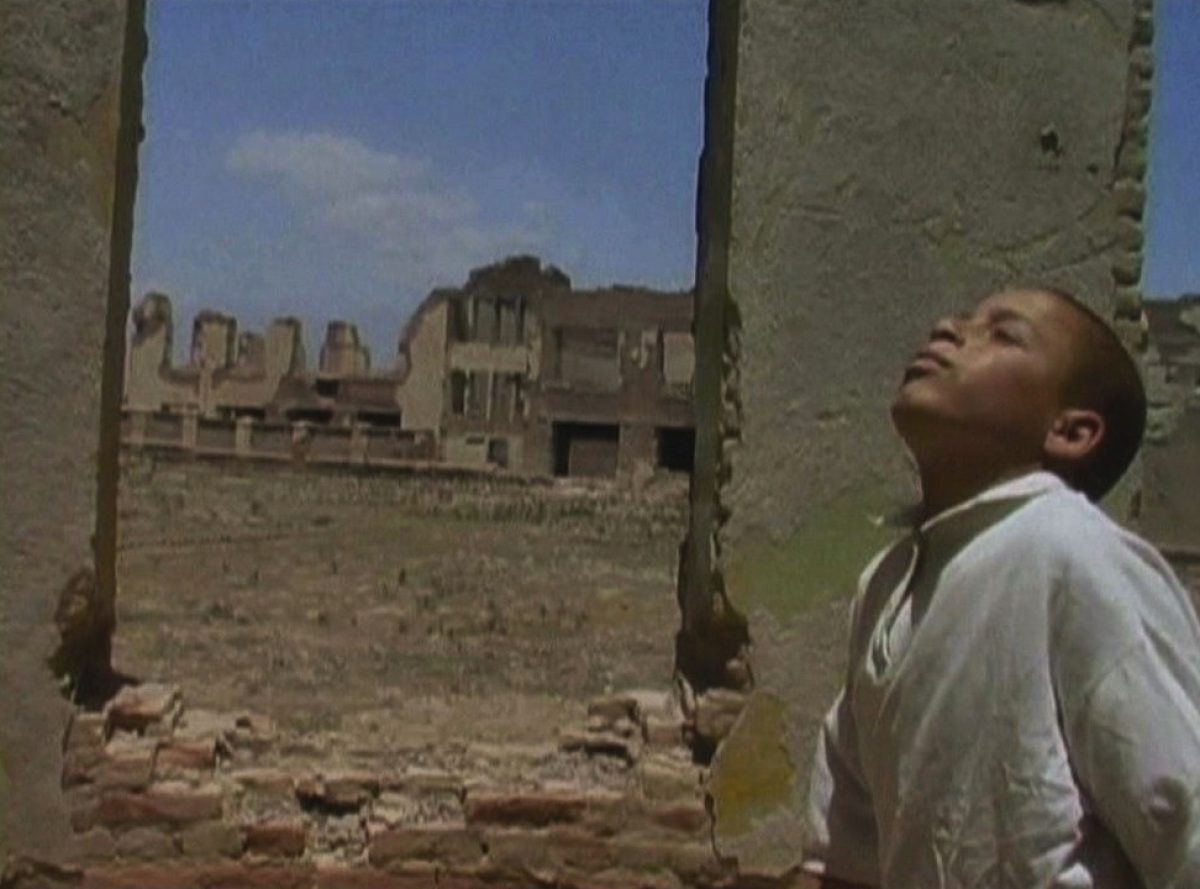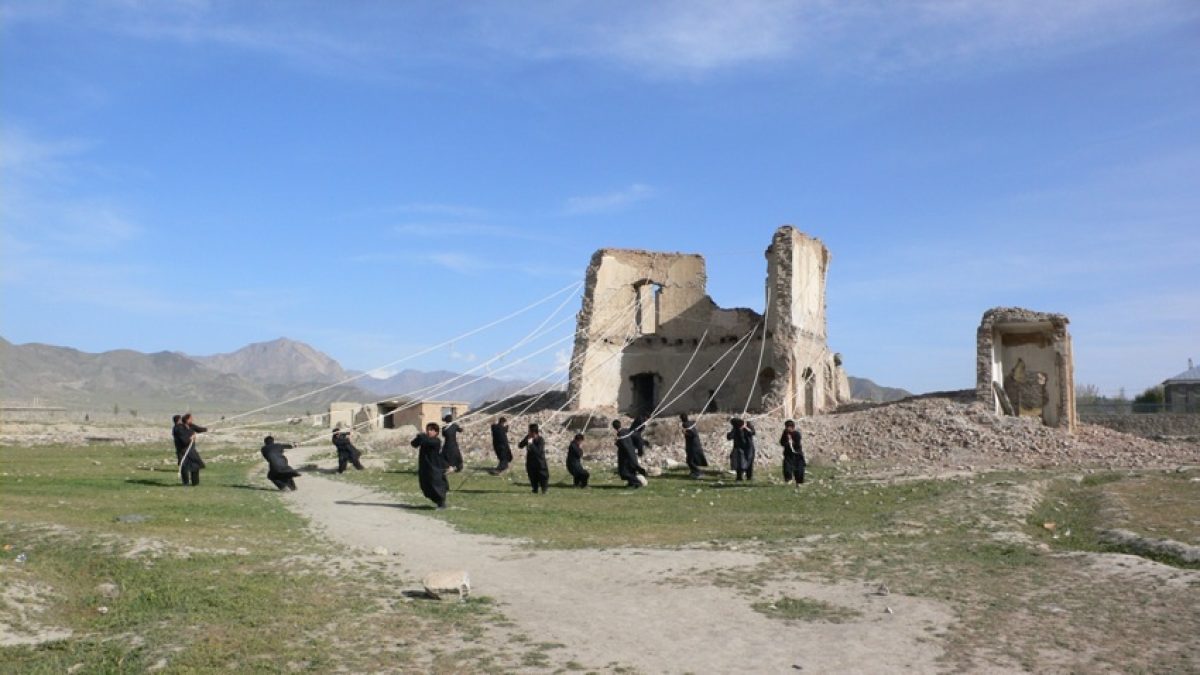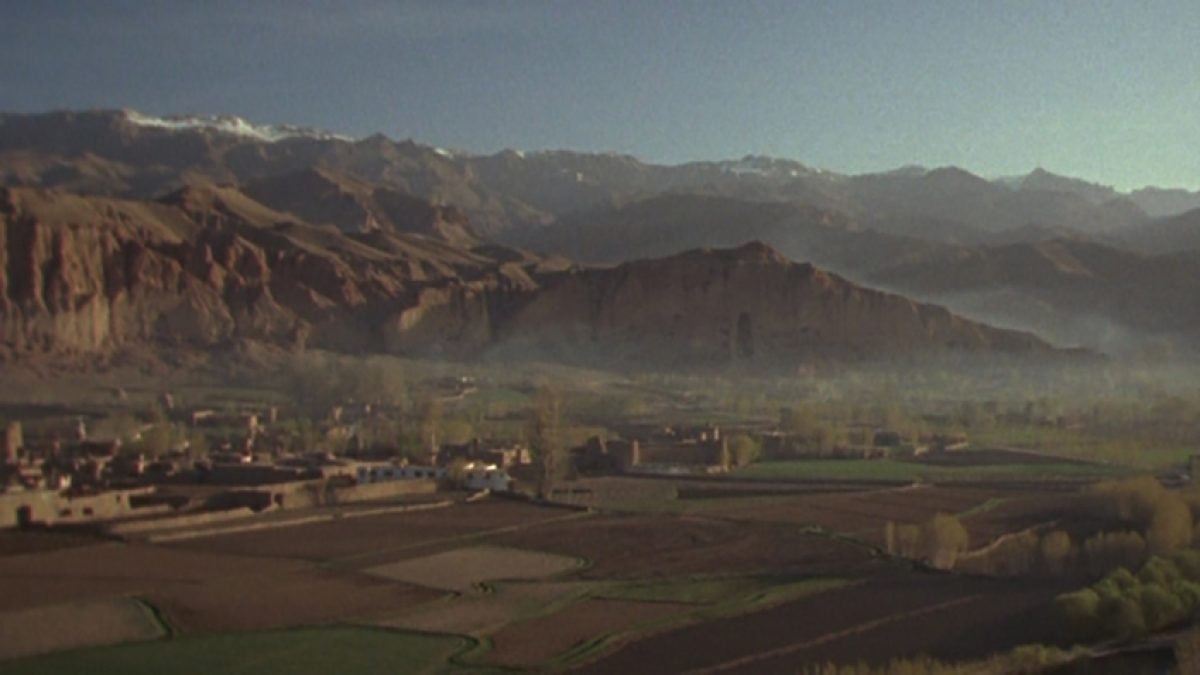Ruins: Stories of Awakenings
4th February – 10th April 2010
Anna Schwartz Gallery
The issue of “otherness”, in all its representations, seems to be a major concern of current art practice, a phenomenon further motivated by the ascendance of global art festivals (Documenta, bi/triennials, etc.) that engage just as much with the histories of art as with contemporary political and social histories. Today technology has made possible a plurality of artistic practices that continue to challenge the notion of the work of art itself. Contemporary artists from places as diverse as Mexico, China, Cuba, Iran, Israel and Palestine are not only creating complex spaces and temporalities that seek a newer audience; they are also working as anthropologists, cultural critics, ethical philosophers and photojournalists, creating a textured world that is rarely found in the popular media. These artists are the wandering souls of the world who move from one place to another making art that witnesses, that challenges and that asks other questions. They are celebrated, ignored, persecuted and sometimes even killed for refusing to take sides in the game of ‘us’ against ‘them;’ they are the innocents abroad, often exiles in their own countries of birth.
The works of such artists create new spaces that call for a new viewer, one who is acutely aware of the oscillation between the global and the particular (between an inherited identity and an acquired one) that artists have to negotiate in order to create heterogeneous works. This past summer, in Kabul, Afghanistan, I realized that I am one of these artists. As an Afghan artist, who left her country of birth a few years after the former Soviet invasion, I have tried to comprehend the disaster that has ravaged my country for more than two decades. Blanchot says: “A disaster touches nothing, but changes everything”. Afghanistan is physically destroyed, but the resilience to survive persists unabated. Language, notions of domesticity and perceptions of the other are all transformed radically, to the extent that survivors/refugees often refuse to talk about what they went through. Many of us have known the history of this silence. These nomadic artists give voice to the silence amongst us through their works.
In my work, I try to juxtapose the space of politics with the space of reverie; the space of shelter with that of the desert: I try to perform the ‘blank spaces’ that are formed when everything is taken away from people. How do we come face to face with ‘nothing’ with ‘emptiness’ where there was previously something. I was a refugee myself for several years, moving from one country to another, aware that at every juncture I was a guest, who at any moment might be asked to leave. The refugee’s world is a portable one, allowing for easy movement between borders. It is one that can be taken away as easily as it was given: provisionally and with little anxiety on the part of the host.
Sometimes it is said that I am post-identity, post-nation, however for me the challenge is to supersede the memory of an event; my works are the forms of my failed attempts to transcend. Art is a petition for another world, a momentary shattering of what is comfortable so that we may become more sophisticated in reclaiming the present. The new wandering souls of the globe, stubborn, weak, persecuted, strong, will continue to make this art as long as people believe in easy solutions and banal closures.
Lida Abdul, 2010
Images

Dome, 2005
Digital video, 4:3, colour, sound
4 minutes 50 seconds

Once Upon Awakening, 2006
archival pigment print on paper
105.5 x 163.5 cm
Edition of 3

Clapping with Stones, 2005
16mm film transferred to digital video, 16:9, colour, sound
4 minutes 53 seconds


